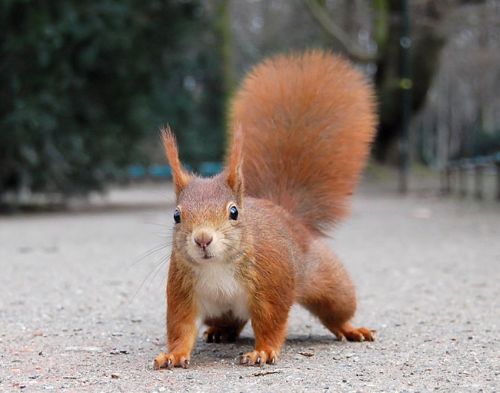November 24

Red squirrel, photo by Ray Eye.
- 1792: November 24, 1792 – Saw a squirrel in Baker’s hill: it was very tame. This was probably what Thomas called a pole-cat.
- 1789: November 24, 1789 – The miller supplies us with cold, damp flour, & says he can get no other: he adds, that the best wheat is at the bottom of the mows, & will not come forth till the spring. The latter part of the wheat harvest was very wet.
- 1788: November 24, 1788 – Liss hounds are hunting on the common. My well very low: some wells are dry. We have taken away much of the old wood from the vines. Wheeled dung.
- 1781: November 24, 1781 – Cascades fall from the fields into the hollow lanes.
- 1777: November 24, 1777 – Gathered in all the grapes for fear of the frost. We have now enjoyed a dry good season, with no more rain than has been useful, ever since the first week of August.
- 1775: November 24, 1775 – A flight of woodcocks about in the country.
- 1773: November 24, 1773 – Finished the levelling, & turfing of garden. The alteration has a good effect. The weather & rains considered, the turf lies pretty well.
- 1770: November 24, 1770 – The wood-pigeon, or stock-dove begins to appear. they leave us all to a bird in the spring, & do not breed in these parts; perhaps not in this island. If they are birds of passage, they are the last winter bird of passage that appears. The numbers that come to these parts are strangely diminished within these twenty years. For about that distance of time such multitudes used to be observed, as they went to & from roost, that they filled the air for a mile together: but now seldom are more than 40 or 50 anywhere to be seen. They feed on acorns, beech mast, & turneps. They are much smaller than the ring-dove, which stays with us all the year.
Notes:
Thomas was Gilbert White’s manservant, frequently mentioned in these pages. The squirrel/poleccat sighting is recorded on October 28. The noting of a squirrel as a rare and novel animal demonstrates the boom and bust of the red squirrel’s (Sciurus vulgaris) fortunes. According to Oliver Rackham’s invaluable History of the Countryside, they became much more common towards the end of the nineteenth century as more conifers were planted, declining sharply again with the introduction of the grey squirrel.
The classification of pigeon/dove species seems to have shifted since White’s time. ‘Wood Pigeon’ now refers to the same bird as ‘Ring Dove’, Columba polumbas, instantly recognizable for its large size and loud sobbing coo. The smaller bird White notes down is known only by ‘Stock dove’ now, Columba oenas. It is a migrant in its Northern ranges according to Wikipedia. Here is an excellent guide to distinguishing British pigeons.
EDITED TO ADD: Apologies for the incorrect link to the pigeon site.
 Theme Ported to
Theme Ported to